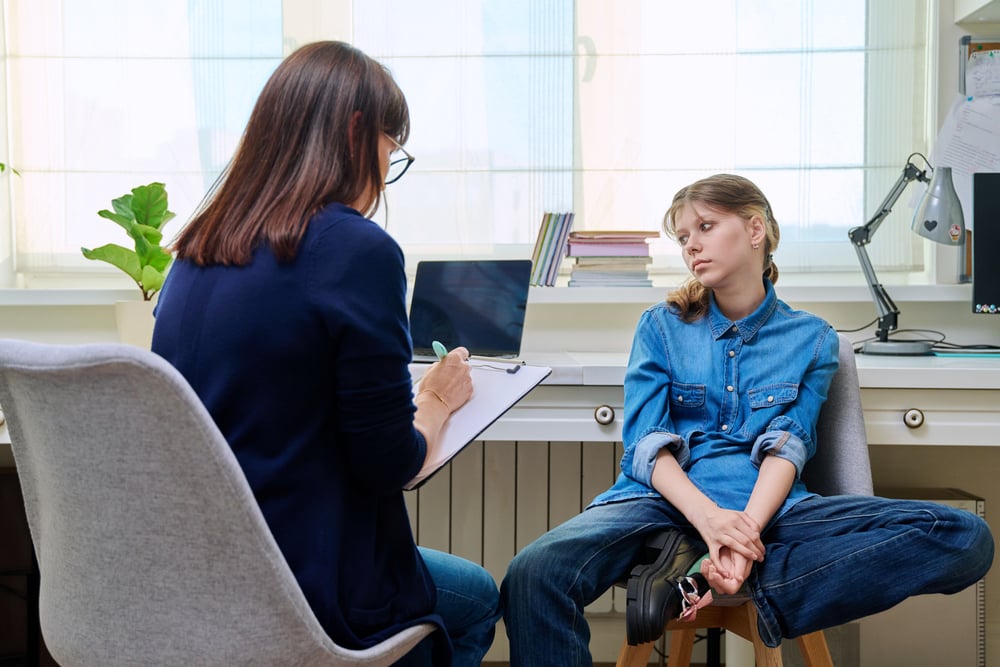In a new study in JAMA Psychiatry, researchers tested an increasingly intensive, multi-step approach to early intervention for people at ultra-high risk of psychosis. Their findings? The intervention failed in every way.
In this sequential multiple-task randomized trial including 342 individuals, a specialized psychological intervention (cognitive-behavioral case management [CBCM]) and psychopharmacological intervention (CBCM and antidepressant medication) were not more effective than control conditions in improving remission and functional recovery. Recidivism rates among individuals who submitted were high.
Despite being classified as ultra-high risk, few people progress to psychosis anyway. Moreover, the intervention did not lead to more remission, relapse rates were high for those who quit after treatment, maintenance therapy after remission was not more effective than simple monitoring (watchful waiting), and no treatment (for example, CBCM or drugs) was. more efficient than anyone else.
The study was led by Patrick McGorry and other researchers at Australian early intervention non-profit Orygen, affiliated to The University of Melbourne. Also, it included researchers from Columbia University, UC Davis, and UCSF. Participants were 342 people between the ages of 12 and 25 who sought treatment for being at ultra-high risk (UHR) of psychosis.
 UHR is a theoretical construct that first emerged in the 1990s. It is based on the idea that people with schizophrenia or other psychotic diagnoses could be identified early before they meet the criteria for those diagnoses based on features such as subthreshold psychosis (eg, unusual thoughts, disorganized speech, perceptual abnormalities).
UHR is a theoretical construct that first emerged in the 1990s. It is based on the idea that people with schizophrenia or other psychotic diagnoses could be identified early before they meet the criteria for those diagnoses based on features such as subthreshold psychosis (eg, unusual thoughts, disorganized speech, perceptual abnormalities).
The current study was called Staged Treatment in Early Psychosis (PASO) and had three stages, starting with six weeks of support and problem-solving (SPS). If this did not result in amelioration of UHR symptoms (symptomatic and functional improvement), patients underwent 20 weeks of or continued SPS. or CBCM. If this also did not result in remission, patients received 26 weeks of CBCM with fluoxetine (Prozac) or CBCM with placebo. If patients returned, they received either SPS maintenance or simple monitoring.
The theory is that if treatment can induce remission of these undiagnosable subthreshold symptoms, it will prevent people from eventually progressing to full psychosis. Overall, however, the high-risk model does an extremely poor job of predicting who will eventually graduate to full-blown psychosis. Previous research has also found that interventions for those considered UHR, such as giving them antipsychotic drugs, can lead to worse outcomes.
The researchers had six hypotheses, all predictions about how effective they thought the early intervention treatment would be. But their hypotheses were all proven wrong:
- Hypothesis 1 was that stage 1 (SPS) would result in a 50% remission. Instead, it resulted in a much smaller moderation rate of 8.5%.
- Hypothesis 2a was that in stage 2, those who received the more intensive intervention, CBSM, would do significantly better than those who continued SPS. Instead, there was no difference between the groups.
- Hypothesis 2b was that in the CBCM group, they could predict outcomes based on specific factors (cognitive biases or vulnerabilities). Instead, they found no differences in these factors.
- Hypothesis 2c was that those specific factors would improve for those who would do better in CBCM. Instead, they found no differences in these factors.
- Hypothesis 3 was that in stage 3, Prozac added to CBCM would be better than CBCM plus placebo. Instead, there was no benefit for Prozac over placebo.
- Hypothesis 4 was that in those who relapsed, maintenance treatment with SPS would be better than simple monitoring in preventing relapse. Although there was a difference in the early weeks after treatment, there was no difference between groups at the one-year follow-up point.
Finally, after one year, 27.2% reportedly relapsed at some point, although most of them then relapsed. Consistent with previous research showing that the UHR model is a poor predictor, only 13.5% actually progressed to clinical psychosis.
The researchers conclude:
The findings suggest that improving the intensity of treatment with psychological interventions (CBCM) or antidepressant medication in actual youth mental health services does not produce a benefit over continued simpler care over a longer period.
One of the main limitations of the study also indicates how much the patients disliked the interventions: Before the end of the third stage, 248 out of 342 (72.5%) left the study.
The researchers explicitly compare this to the extremely high STAR*D antidepressant trials, which led the researchers in STAR*D to fraudulently inflate their numbers, violating their pre-specified protocol in many ways, including consideration of 606 study dropouts. More than 570 who weren’t depressed enough to be in the study to begin with or never got a baseline score to be treatment successes.
****
McGorry, PD, Mei, C., Amminger, P., Yuen, HP, Kerr, M., Spark, J., . . . & Nelson, B. (2023). A sequential adaptive intervention strategy targeting remission and functional recovery in youth at very high risk of psychosis: The Staged Treatment in Early Psychosis (STEP) sequential multiple task randomized trial. JAMA Psychiatry.2023;80(9):875-885. doi:10.1001/jamapsychiatry.2023.1947 (Link)
#Early #Intervention #Ultrahigh #Risk #Psychosis #Ineffective
Image Source : www.madinamerica.com